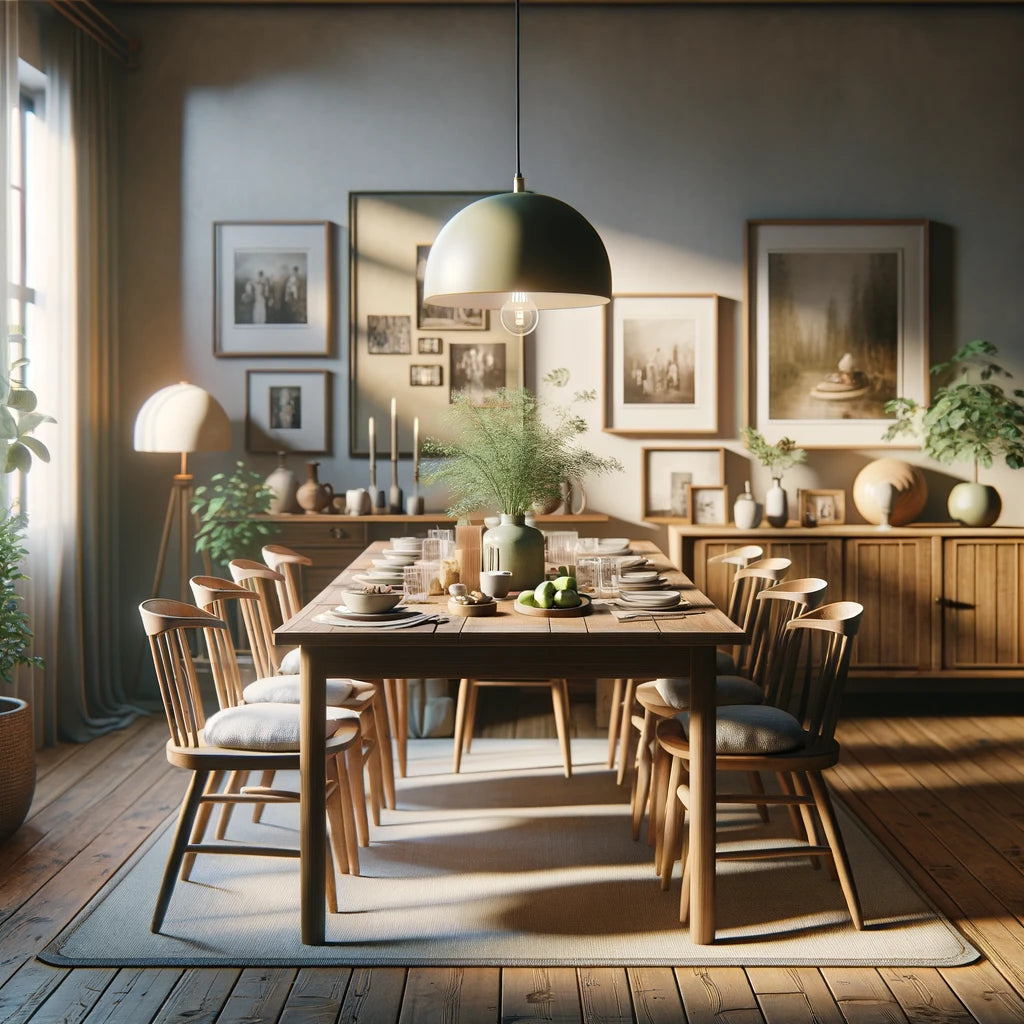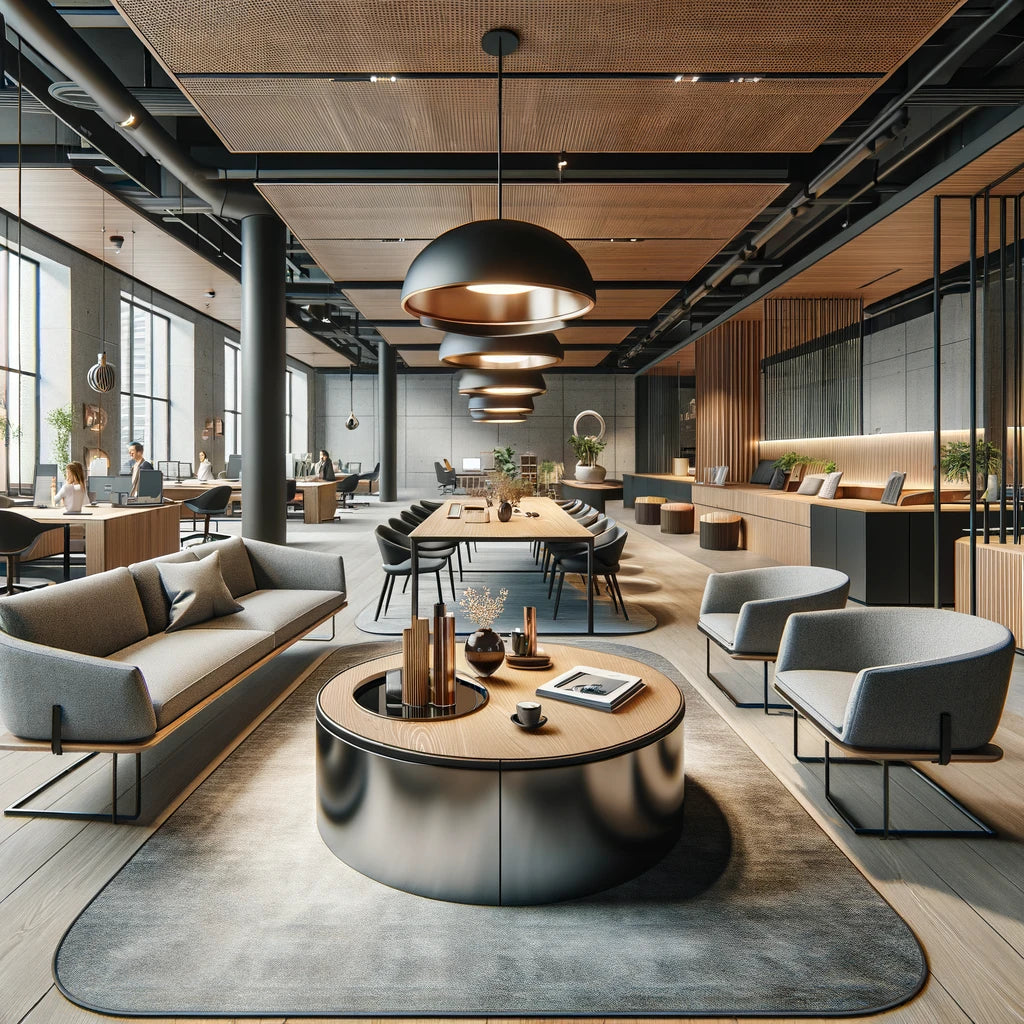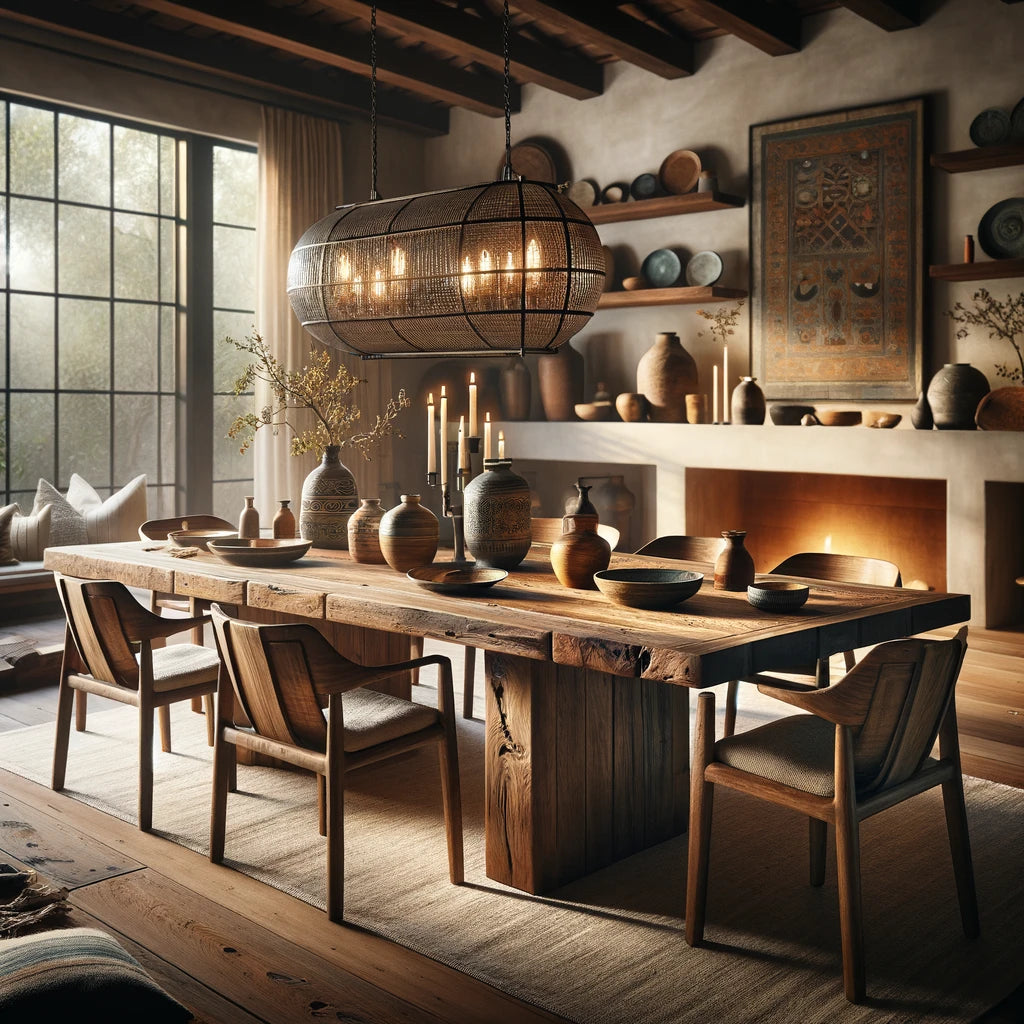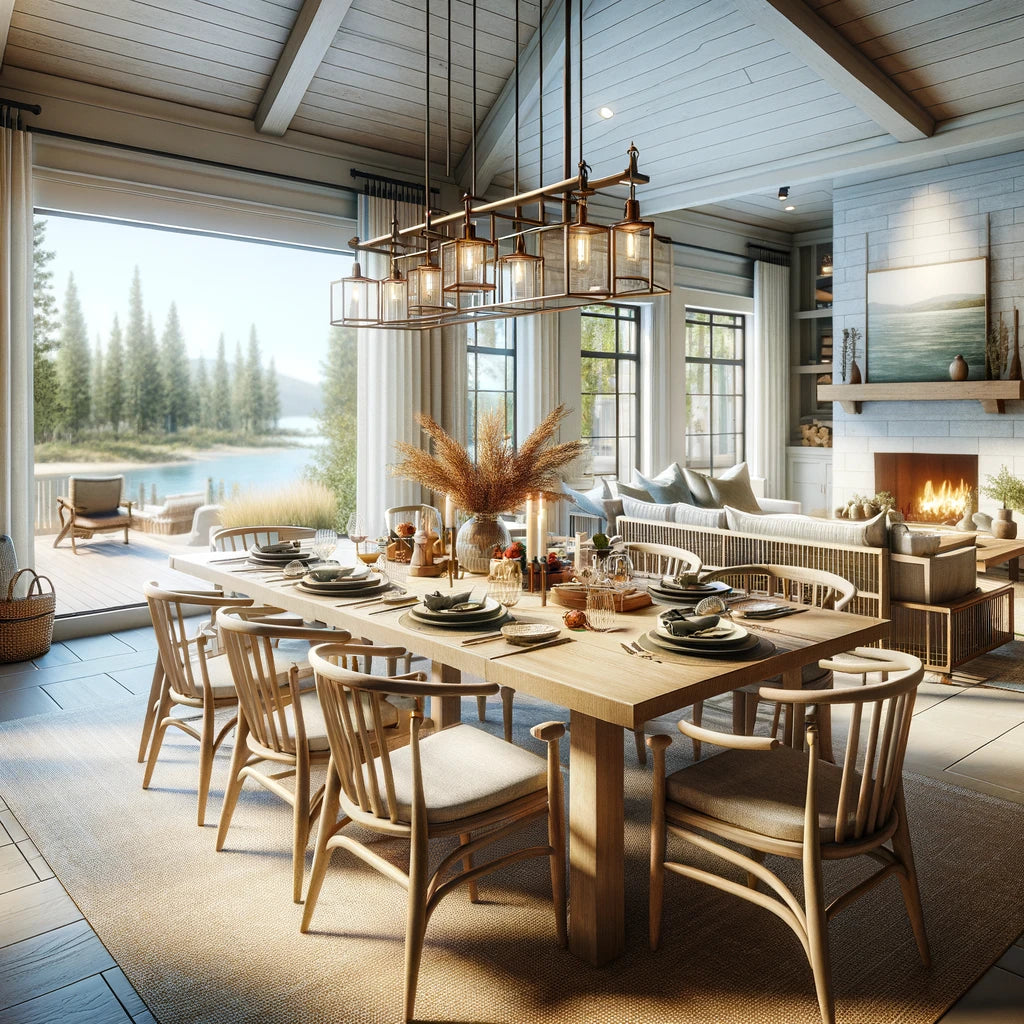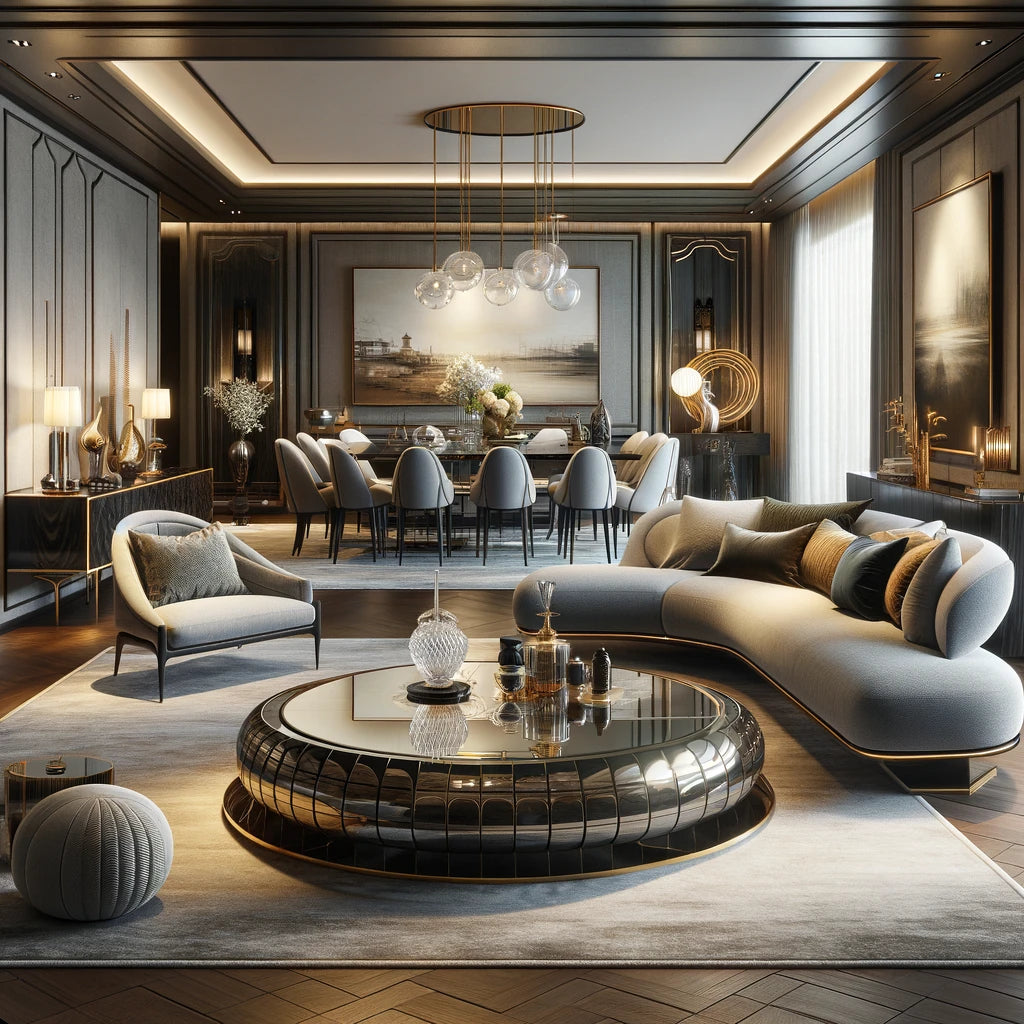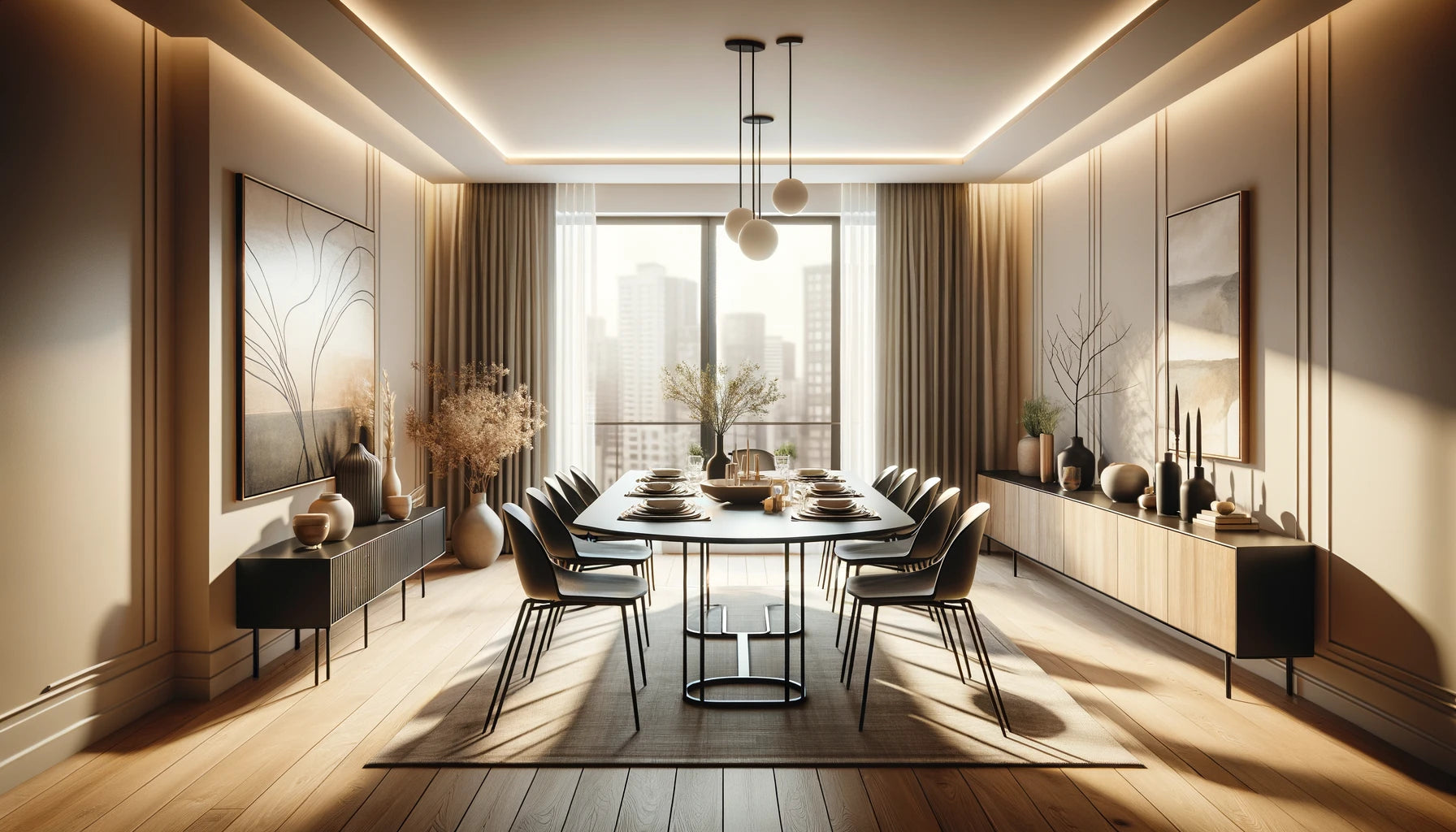In the symphony of interior design, lighting plays the lead melody.
It's a transformative element that can elevate a space from the mundane to the sublime, sculpting the air and mood around us with just a flick of a switch. Proper lighting does more than just illuminate—it enlivens, highlights, and functions as the heartbeat of a home's design.

Natural Light: Harnessing the Sun's Warmth
The dance between space and light begins with the sun's natural rays.
Maximising natural light isn't just about brightening a room—it's about creating an organic connection with the outside world. The use of light, gauzy curtains can invite daylight to cascade into a room, setting a bright and airy tone. In contrast, translucent shades can be employed to temper the glare of the midday sun without losing the gentle warmth it provides.
Strategically placed mirrors can act as conduits for daylight, bouncing brightness into less-lit corners and creating the illusion of expansiveness. They're not just tools for reflection but instruments that play with light, transforming and directing it where it's most needed. Skylights and well-placed windows can also serve as natural spotlights, highlighting specific areas and bringing a piece of the sky into indoor spaces.
Task Lighting: Illuminating with Intention
Task lighting is the focused light needed to perform specific tasks—it’s the reading lamp that perches by your favourite armchair or the under-cabinet lighting that makes a countertop an ideal prep area in the kitchen. These lights are the unsung heroes of functionality, offering a glow that's both concentrated and conducive to productivity.
In study areas, a well-placed lamp not only alleviates strain on the eyes but can also become a focal point of design. Similarly, pendant lights hung over a kitchen island provide both ambient and task lighting, melding form with function. In a workshop or craft room, bright, direct lighting ensures precision in every activity. Each task light is a spotlight for the everyday acts of life, enhancing efficiency and adding an extra layer of safety.

Ambient Lighting: The Foundation of Light
Ambient lighting is the soft glow that fills a room, often provided by ceiling fixtures like chandeliers, recessed lights, or flush mounts. It’s the base layer of a lighting scheme, setting the overall level of illumination and establishing the room’s first impression.

The selection of ambient lighting should be informed by both the size of the room and its primary functions. In a spacious living room, a grand chandelier can add opulence as well as light, whereas in a smaller bedroom, flush mount lights can create a cosy, uncluttered look. With dimmers, ambient lighting can adapt to different moods and times of day, transitioning from the clear brightness of morning to the gentle duskiness of evening.
Natural light layered with decorative and task lighting creates a beautiful ambiance #KBtribechat pic.twitter.com/LuiWe3YvND
— Sharon L. Sherman, CKD, ASID, CID (@sharonlsherman) October 26, 2022
Accent Lighting: The Art of Highlight
Accent lighting is akin to the strokes of a paintbrush on a canvas—it’s used to draw attention, create intrigue, and highlight the artistry of your space. It’s the track lights that illuminate a bookshelf, the picture lights that throw a glow over framed artwork, or the subtle spotlights that showcase architectural details.
This selective lighting can create vignettes within a room, guiding the eye to areas of interest and elevating the overall aesthetic. For instance, installing strip lights in a display cabinet can turn everyday dinnerware into a visual spectacle. Accent lighting is about enhancing the dimensional and textural qualities of a space, providing visual cues and adding depth.

Layering Light: The Key to Balance
The true magic of lighting in interior design lies in its layering. A room with only a single light source can feel flat or stark, but a room with a well-thought-out lighting plan can come alive with dimension and warmth. The goal is to achieve a balance, where no corner is oppressively dark or glaringly bright, and each layer of lighting serves a purpose.
Layering light involves combining ambient, task, and accent lighting to control the room's mood and functionality. For instance, in a living room, a central fixture may provide ambient light, while lamps offer task lighting for reading, and accent lights highlight art pieces or plants. With a smart lighting system, one can even orchestrate these layers to change in intensity and warmth throughout the day, adapting to the rhythm of human activity within the space.
In crafting the ambiance of a home, lighting is a critical tool, capable of transforming the mundane into the magical. It’s not just about choosing fixtures that complement the décor; it’s about envisioning the interplay of light and life. As we consider the power of lighting in interior design, we unlock the potential to not just see our spaces in a new light, but to experience them with a renewed sense of appreciation and wonder.
Conclusion
The power of lighting in interior design transcends its basic function of illumination. It is the silent narrator of a home's story, setting the scene and mood for every chapter. Whether it's the golden hue of morning light streaming through a window, the precise beam of a task lamp, the embracing glow of ambient fixtures, or the dramatic flair of accent lighting, each element contributes to the creation of a harmonious and dynamic space.
The careful layering of these elements allows for a symphony of shadows and brightness, where the mood can be controlled and sculpted as easily as the clay in an artist's hands. As interior designers or homeowners, we have the opportunity to curate experiences, evoke emotions, and enhance the beauty of our surroundings through the strategic use of light. Lighting should not be an afterthought but rather a central component of design planning, one that requires thought, creativity, and a keen understanding of the interplay between light and shadow, form and function.
Ultimately, the power of lighting lies in its ability to transform a space not only visually but emotionally, creating environments that are not only seen but felt. By mastering the art of lighting, we do more than simply light a room; we light up lives, crafting spaces that are not only functional and beautiful but also imbued with a sense of comfort, warmth, and inspiration.



